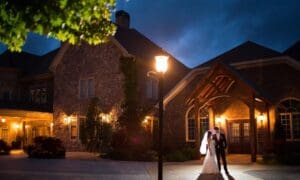The Easter of 1982 I drove up to visit with my parents during spring break for a few days.
The trip to Akron took 12 to 14 hours depending on traffic. I seldom had the money to spend the night half way and pretty much had to drive straight through. This time, though, my dad gave me some funds to stop halfway in Kentucky, and my daughter, 14, and I left Akron on Easter Sunday early in the morning. We left Kentucky early on Monday morning and arrived in Fayetteville mid-afternoon.
At the red light at the courthouse I could see a lot of activity on the courthouse lawn and pulled around to the south side and parked. Then I could see that the roof and tower were gone. I started to cry, and I cried and I cried. My poor daughter didn’t know what to do and sat quietly by.
Finally, I got control, got out of the car and asked a deputy for the details. Oh my!
On Wednesday night, I got some of the officers of the historical society to go with me to meet with the county commissioners. The best place to meet at that time was that side room at Melears. I was devastated to learn that three of the five favored tearing down the remains of the courthouse and build a park there with the insurance funds and build an administration building somewhere else. Personally I wasn’t in favor of the idea.
So I got them together for the next several nights and finally they said if you want the courthouse put back, put it back. We all thought that was a grand idea. The historical society was named as the official funding agent and given carte blanche in obtaining necessary monies.
A local insurance agent had the courthouse insured for $350,000 plus $150,000 for contents. The estimate for rebuilding what had been burned was $1.1 million. Don’t ask me how she got this major insurance company to agree to calling it insured for $750,000, but she did. The county spent $327,000 and change for the total cost of rebuilding over the insurance funds.
I could spend the next three columns covering the rebuilding and all that was involved. So many local companies donated time and services at no charge, and a couple of companies in Clayton County came to help at no charge to the county. Many parts of the roof and the weather vane on top of the cupola had to be made by hand and were done so at no charge.
Everything that dropped down to the grounds after the fire was all hauled out to the county dump on McDonough Road. Several of us in the historical society sat out there in the broiling hot sun digging through those piles for as many of the slate roof pieces and scraping off bricks as we could find to sell. We had the slate tiles stenciled with our oval “signature” and sold for restoration funds. The society sold blue tee shirts with that oval on them for $5 to help.
We paid about $2.50 for each one and 1,600 were sold. The Fayette State Bank commissioned an oil painting of the courthouse and auctioned it off bringing $1,525 to add to those funds. A doll house was built by a Fayette Countian and auctioned off also helping out.
Each Saturday society members were found on a corner of the courthouse grounds we were allowed to be on and sold these items, raising $27,000 in its efforts by the society.
The attempted burning of the oldest courthouse in Georgia was featured in a new national newspaper at that time, USA Today, which brought thousands of dollars in donations from folks who had traveled through here at one time or another.
If you would like to read about the trial of one of the two criminals involved, it’s case number 02-0457-04-82, tried in Fayette Superior Court, in an empty store building in the north end of Fayetteville. Needless to say, the county had to rent a lot of empty buildings at that time to conduct business.
“Jon’s support of and passion for Close Up is contagious. Advocating and promoting Close Up is his very successful hobby, and he has brought multiple generations of families on the program. His love for teaching and civic education is unequaled,” says Tim Davis, CEO of the Close Up Foundation.
Gloer will be honored at the Close Up Foundation’s annual Congressional Reception on April 26 in Washington, D.C. where he will receive a certificate and plaque












Leave a Comment
You must be logged in to post a comment.